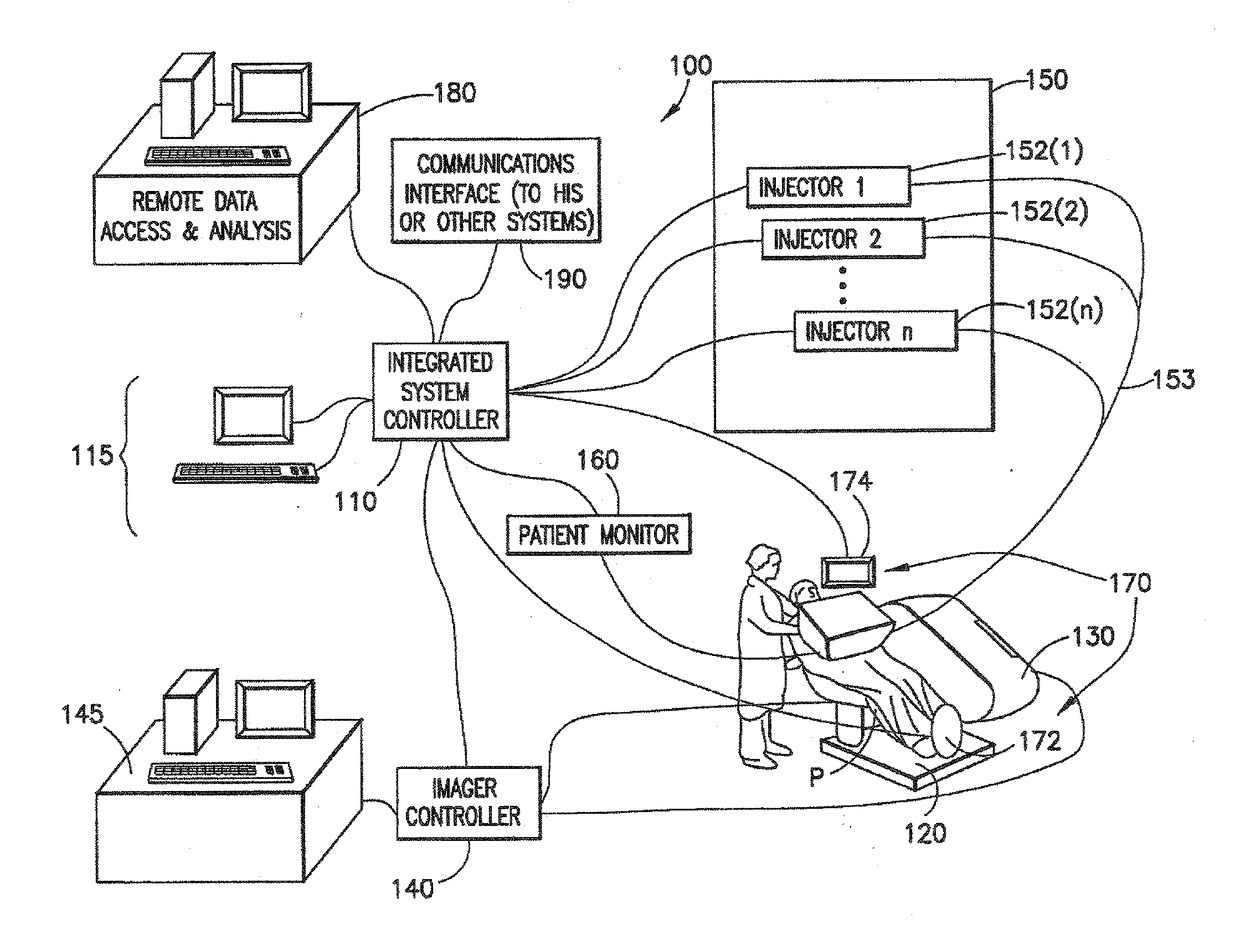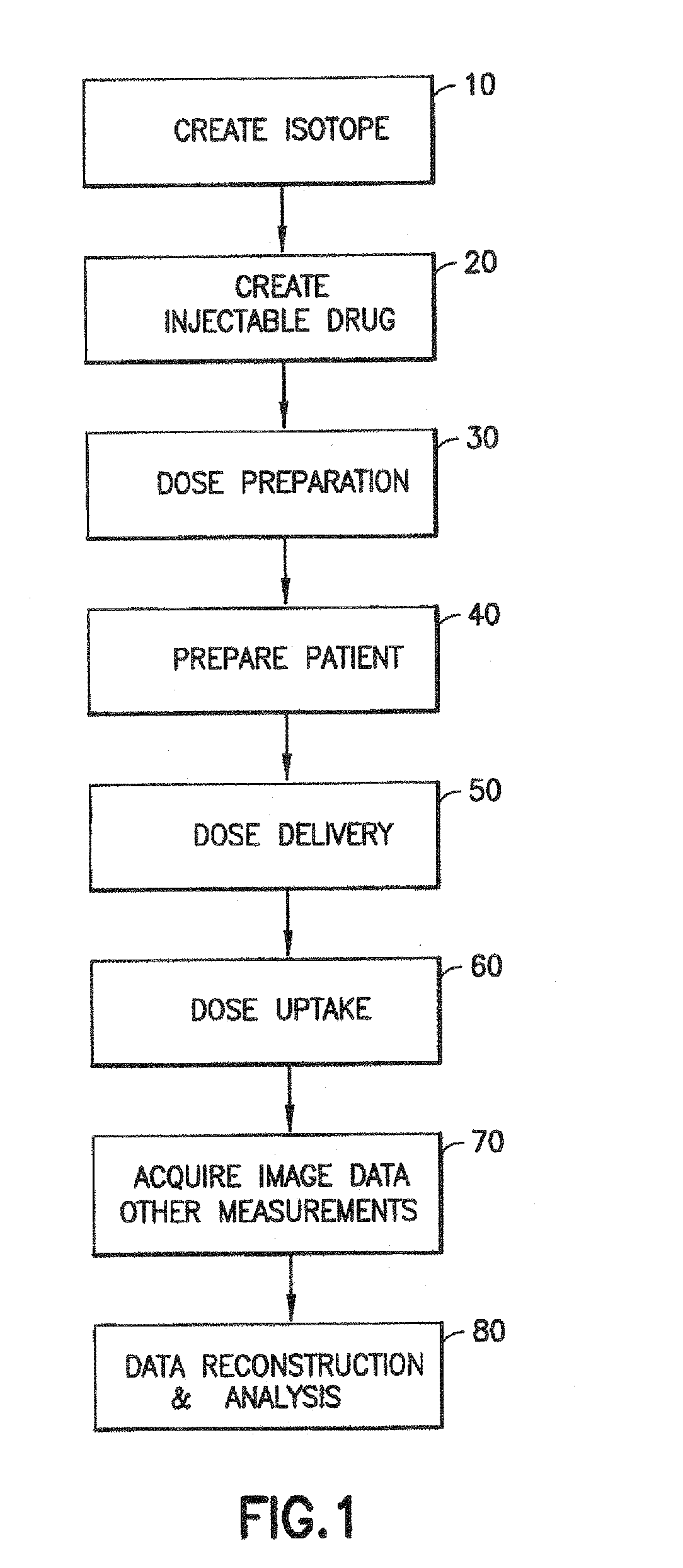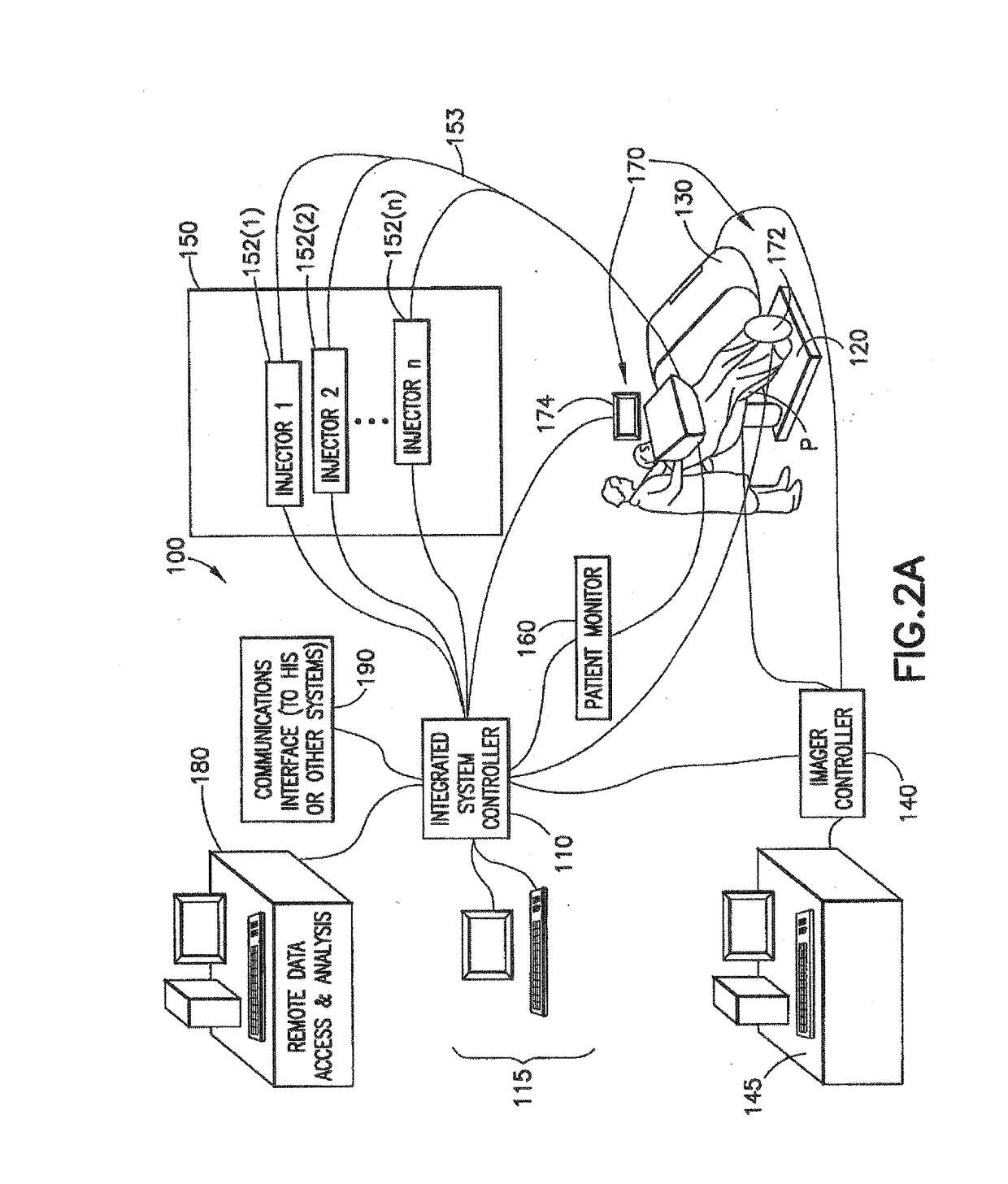Combined radiopharmaceutical imaging system
a radiopharmaceutical and imaging system technology, applied in the field of combination radiopharmaceutical imaging system, can solve the problems of reducing visualization or reducing suv (standardized uptake value), and achieve the effects of improving image or diagnostic information, improving safety for attending personnel, and reducing dos
- Summary
- Abstract
- Description
- Claims
- Application Information
AI Technical Summary
Benefits of technology
Problems solved by technology
Method used
Image
Examples
Embodiment Construction
[0069]For purposes of the description hereinafter, spatial orientation terms, if used, shall relate to the referenced embodiment as it is oriented in the accompanying drawing figures or otherwise described in the following detailed description. However, it is to be understood that the embodiments described hereinafter may assume many alternative variations and configurations. It is also to be understood that the specific devices illustrated in the accompanying drawing figures and described herein are simply exemplary and should not be considered as limiting. In the following description, an imaging agent is a liquid, gas, or solid which interacts with the patient and affects the resulting image or data in some way. In the following description, an isotope may be defined as a variant of a particular chemical element which differs in neutron number, but has the same number of protons in each atom. A radioisotope may be defined as a radioactive isotope. A radiopharmaceutical may be def...
PUM
 Login to View More
Login to View More Abstract
Description
Claims
Application Information
 Login to View More
Login to View More - R&D
- Intellectual Property
- Life Sciences
- Materials
- Tech Scout
- Unparalleled Data Quality
- Higher Quality Content
- 60% Fewer Hallucinations
Browse by: Latest US Patents, China's latest patents, Technical Efficacy Thesaurus, Application Domain, Technology Topic, Popular Technical Reports.
© 2025 PatSnap. All rights reserved.Legal|Privacy policy|Modern Slavery Act Transparency Statement|Sitemap|About US| Contact US: help@patsnap.com



